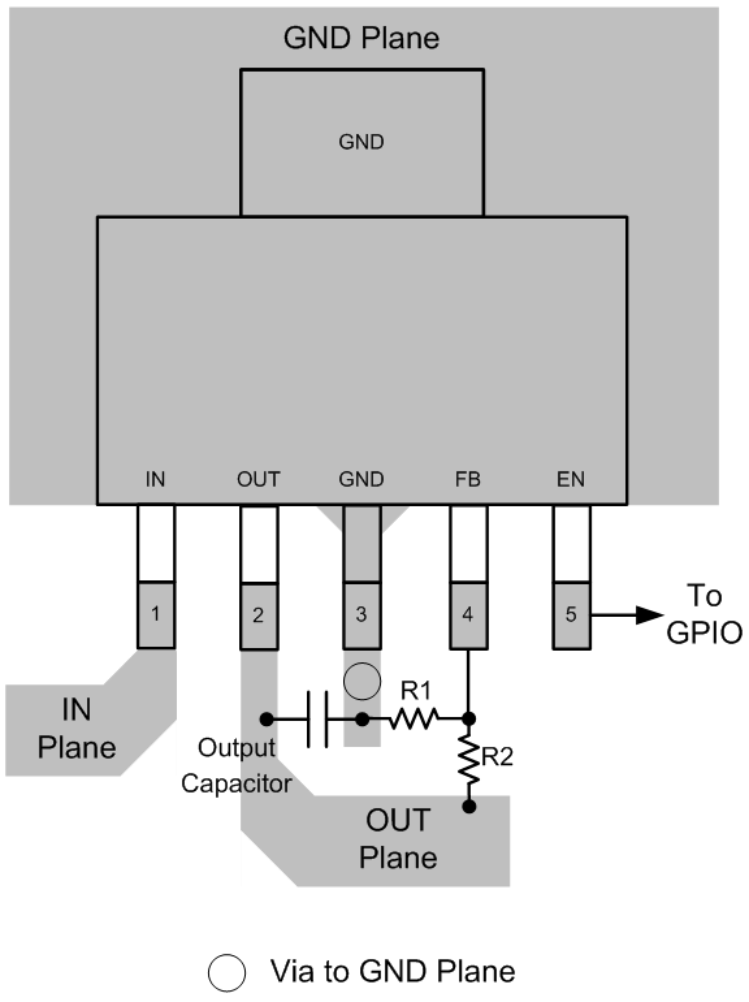SLVS915C February 2010 – July 2015 TPS73801
PRODUCTION DATA.
10 Layout
10.1 Layout Guidelines
- For best performance, all traces should be as short as possible.
- Use wide traces for IN, OUT, and GND to minimize the parasitic electrical effects.
- A minimum output capacitor of 10 μF with an ESR of 3 Ω or less is recommended to prevent oscillations. X5R and X7R dielectrics are preferred.
- Place the Output Capacitor as close as possible to the OUT pin of the device.
- The tab of the DCQ package should be connected to ground.
10.2 Layout Example
 Figure 28. SOT-223 Layout Example (DCQ)
Figure 28. SOT-223 Layout Example (DCQ)
10.3 Thermal Considerations
The power handling capability of the device is limited by the recommended maximum operating junction temperature (125 °C). The power dissipated by the device is made up of two components:
- Output current multiplied by the input/output voltage differential: IOUT(VIN – VOUT)
- GND pin current multiplied by the input voltage: IGNDVIN
The GND pin current can be found using the GND Pin Current graphs in Typical Characteristics. Power dissipation is equal to the sum of the two components listed above.
The TPS73801 series regulators have internal thermal limiting designed to protect the device during overload conditions. For continuous normal conditions, the recommended maximum operating junction temperature is 125 °C. It is important to give careful consideration to all sources of thermal resistance from junction to ambient. Additional heat sources mounted nearby must also be considered.
10.3.1 Calculating Junction Temperature
Example: Given an output voltage of 3.3 V, an input voltage range of 4 V to 6 V, an output current range of 0 mA to 500 mA, and a maximum ambient temperature of 50°C, what is the operating junction temperature?
The power dissipated by the device is equal to:
where
- IOUT(MAX) = 500 mA
- VIN(MAX) = 6 V
- IGND at (IOUT = 500 mA, VIN = 6 V) = 10 mA
So,
The thermal resistance of the DCQ package is 50.5°C/W. So the junction temperature rise above ambient is approximately equal to:
The junction temperature rise can then be added to the maximum ambient temperature to find the operating junction temperature (TJ):